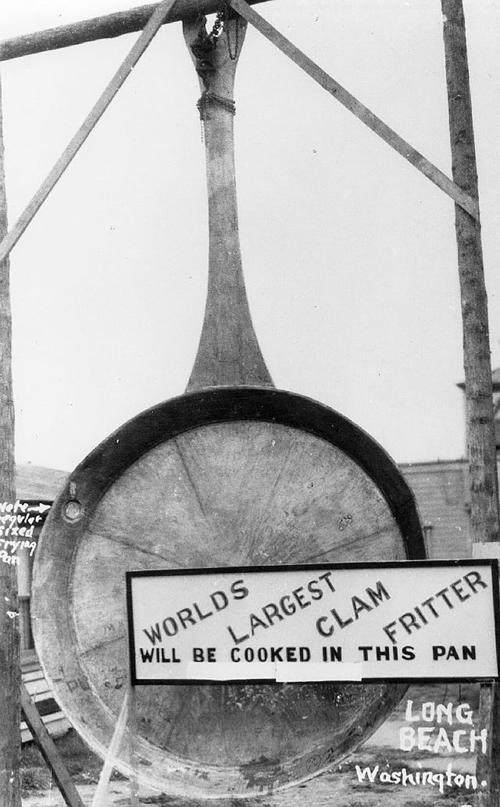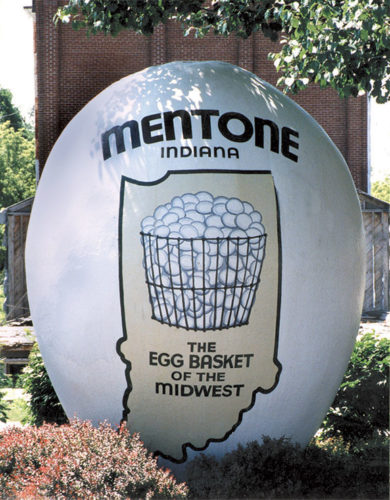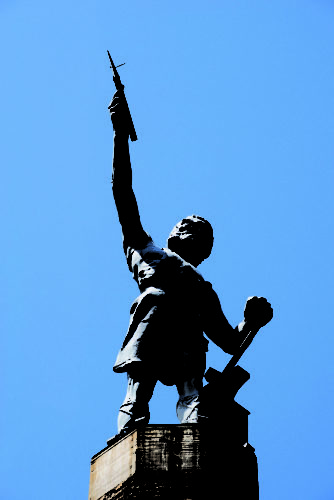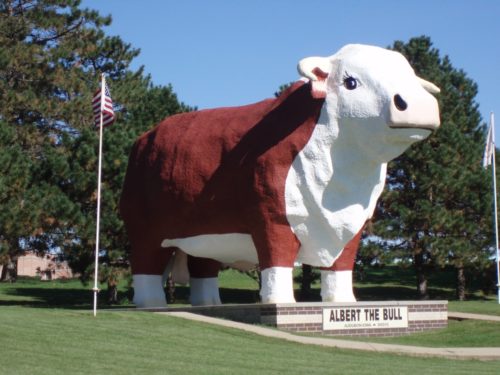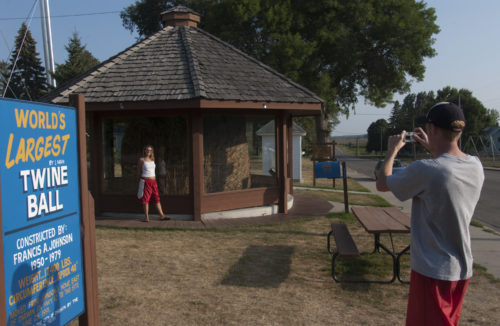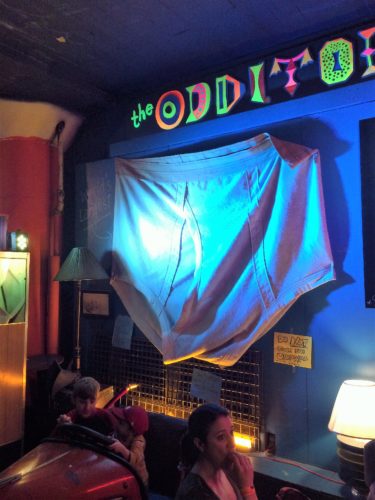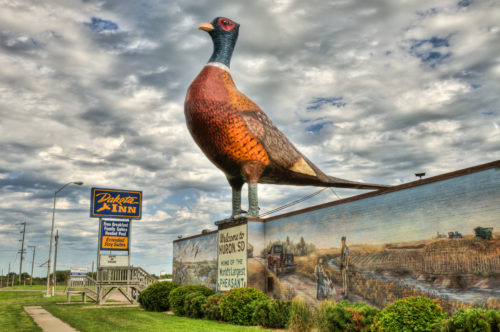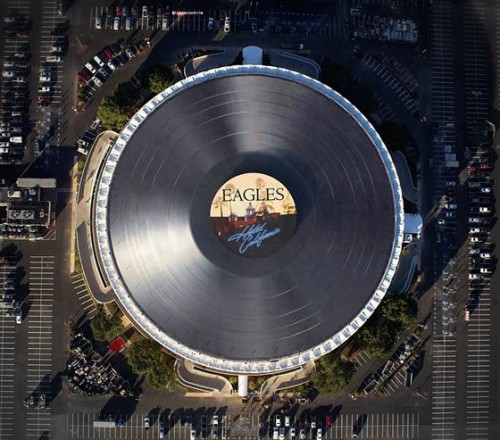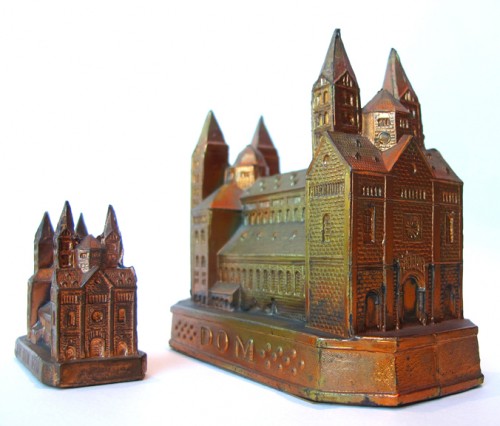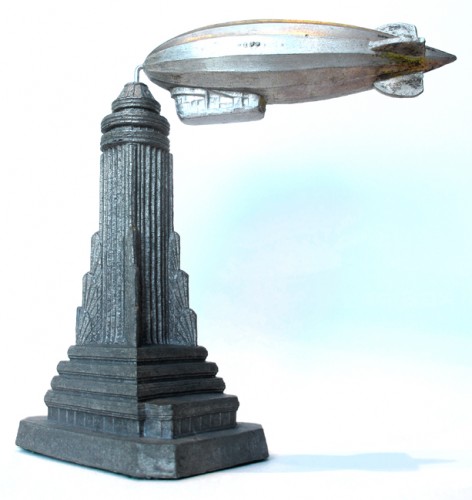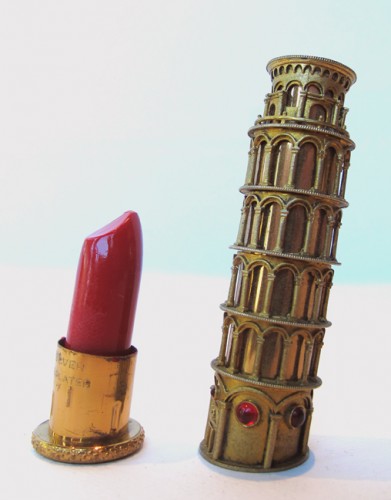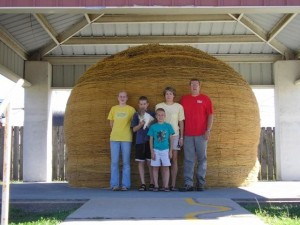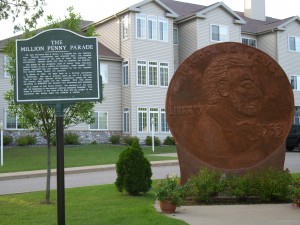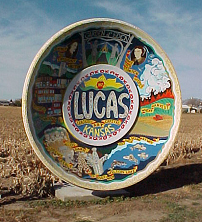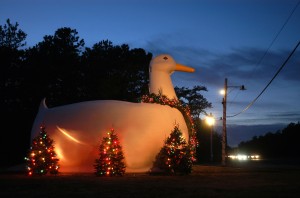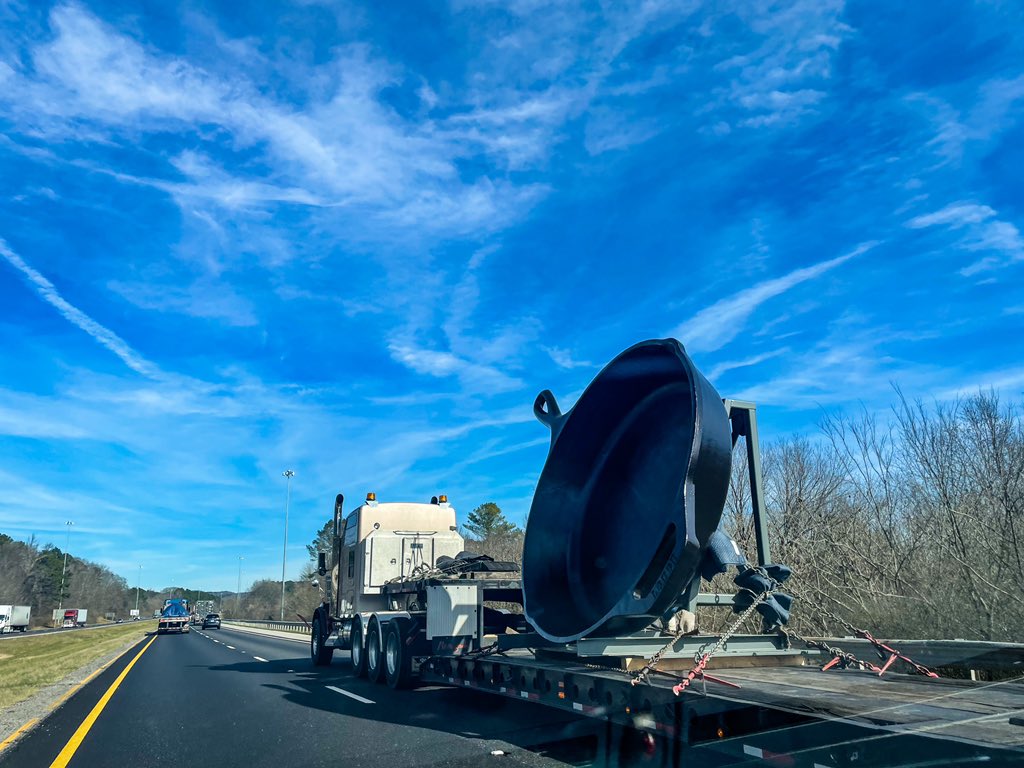
Stuck at the Airport’s correspondent for Museums and Roadside Attractions is planning a summer trip to South Pittsburg, Tennessee for the planned opening of the Lodge Cast Iron Museum.
We’re already intrigued to learn that South Pittsburg, TN has been home to Lodge Cast Iron since 1896. And we’re looking forward to seeing rare cast-iron collections and exhibits about the history of the company, the “making of” cast iron items, and an exploration of ‘Cast Iron Culture.’
Mostly, though, we’re looking forward to seeing the World’s Largest Cast Iron Skillet.
The skillet measures over 18 feet from handle to handle and weighs in at a whopping 14,360 pounds.
World’s Largest Frying Pan
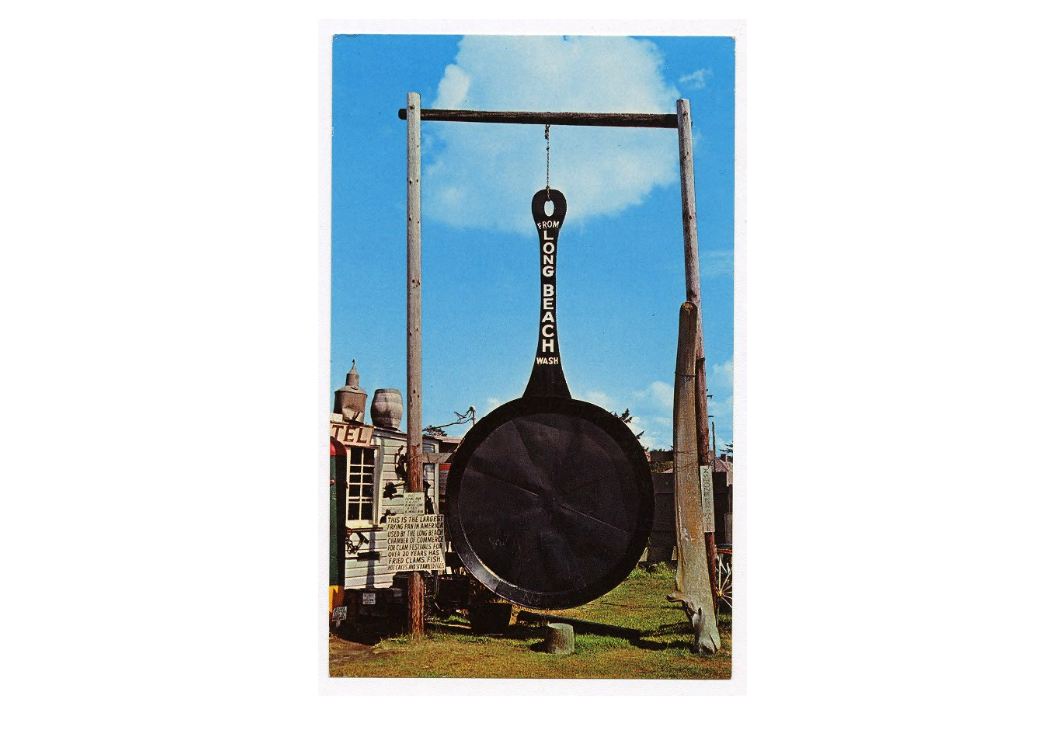
While Lodge Cast Iron may currently lay claim to the World’s Largest Cast Iron Skillet, there have been some contenders over time.
Our favorite is the giant frying pan in Long Beach, Washington.
Created in 1941 for the Long Beach Chamber of Commerce. A pan claiming to be the largest frying pan in America was used in the annual Clam Festival in Long Beach during the 1940s.
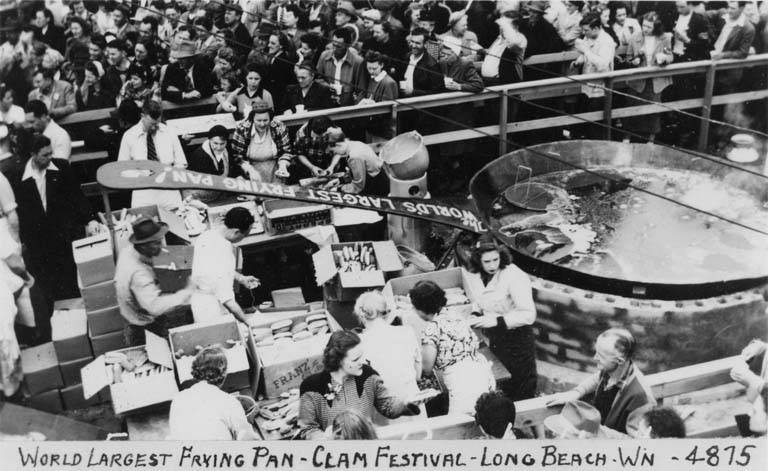
Courtesy University of Washington Libraries, Special Collections
According to Pacific County Tourism Bureau, the giant frying pan was created in Portland, Oregon in 1941 to help promote the first annual Clam Festival.
At that time, the pan weighed in at 1,300 pounds and was 10-feet wide and 20 feet tall.
Back then, this was a working pan. During the clam festival, the pan was used to make a clam fritter out of 200 pounds of clams. The creation required two garden hoes and 4 two-foot X two-foot spatulas. The following year, 20,000 people showed up to eat a giant 9-foot clam fritter.
Here’s the recipe if you want to try it at home:
Chef Wellington W. Marsh’s Giant Fritter Recipe
- 200 pounds of clams
- 20 dozen eggs
- 20 pounds of flour
- 20 pounds of cracker meal
- 20 pounds of cornmeal
- 10 gallons of milk
- 13 gallons of salad oil

The giant frying pan became a tourist attraction. It went on tour throughout the Pacific Northwest and made an appearance in Los Angeles in 1952.
For a long time, the pan hung outside Marsh’s Free Museum in Long Beach (home of Jake, the Alligator Man), but it rusted over the years. Today only the pan’s original handle remains, and the pan’s replacement is made of fiberglass.
